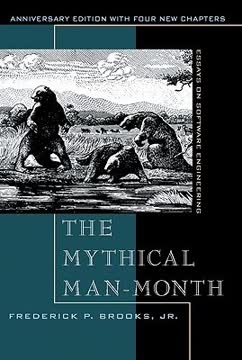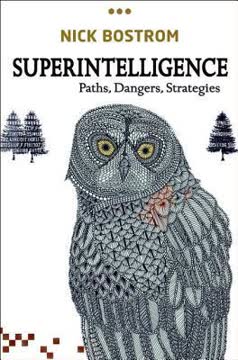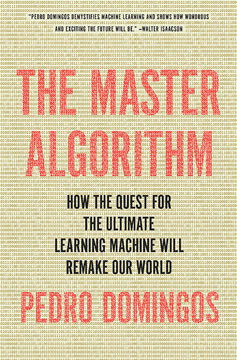نکات کلیدی
عصر دوم ماشین در حال تحول اقتصاد و جامعه ما است
"نسل ما این شانس را خواهد داشت که دو رویداد شگفتانگیز در تاریخ را تجربه کند: ایجاد هوش واقعی ماشین و اتصال همه انسانها از طریق یک شبکه دیجیتال مشترک که اقتصاد سیاره را متحول میکند."
تغییر عمیق در حال وقوع است. ما وارد عصر دوم ماشین میشویم که به اندازه انقلاب صنعتی مهم است. در حالی که عصر اول ماشین درباره غلبه بر محدودیتهای فیزیکی از طریق نیروی بخار و برق بود، این دوره جدید با فناوریهای دیجیتال که محدودیتهای ذهنی ما را غلبه میکنند، مشخص میشود.
تغییر شتابان. سرعت پیشرفت فناوری به سرعت در حال افزایش است:
- خودروهای خودران در عرض چند سال از غیرممکن به واقعیت تبدیل شدهاند
- کامپیوترها اکنون میتوانند گفتار انسانی را درک و پاسخ دهند
- رباتها به طور فزایندهای توانمند و انساننما میشوند
- سیستمهای هوش مصنوعی مانند واتسون آیبیام میتوانند در وظایف پیچیده از انسانها پیشی بگیرند
این انقلاب فناوری در حال تغییر شکل دادن به هر جنبهای از اقتصاد و جامعه ما است، از نحوه کار و ارتباطات تا نحوه یادگیری و خلق. پیامدها عمیق و گسترده هستند.
فناوریهای دیجیتال نمایی، دیجیتال و ترکیبی هستند
"تراکم و پیچیدگی محض دنیای دیجیتال ما خطراتی را به همراه دارد."
رشد نمایی. قانون مور - دو برابر شدن قدرت محاسباتی تقریباً هر دو سال - همچنان صادق است. این بهبود نمایی در فناوریهای دیجیتال به قابلیتهایی منجر میشود که تقریباً جادویی به نظر میرسند.
دیجیتالی شدن همه چیز. با دیجیتالی و متصل شدن بیشتر دنیای ما، شاهد انفجار دادهها و محتوای دیجیتال هستیم:
- بیش از 300 میلیارد ایمیل روزانه ارسال میشود
- 500 میلیون توییت در روز
- 4 میلیارد بازدید ویدیو در یوتیوب در روز
نوآوری ترکیبی. فناوریهای دیجیتال میتوانند به روشهای جدید ترکیب و تطبیق داده شوند، که منجر به نوآوری سریع میشود. نمونههای کلیدی:
- گوشیهای هوشمند محاسبات، جیپیاس، دوربینها، حسگرها و موارد دیگر را ترکیب میکنند
- پلتفرمهای اقتصاد اشتراکی مانند اوبر و ایربیانبی از شبکههای دیجیتال بهره میبرند
- چاپ سهبعدی طراحیهای دیجیتال را با تکنیکهای جدید تولید ترکیب میکند
این ماهیت ترکیبی سرعت نوآوری را تسریع میکند و به پیشرفتهای غیرمنتظره منجر میشود.
هوش مصنوعی و اتصال جهانی تغییر دهنده بازی هستند
"وقتی بازارهای 'برنده همه چیز را میگیرد' مهمتر میشوند، نابرابری درآمد افزایش مییابد زیرا پرداخت در بالاترین سطح از پرداخت در میانه فاصله میگیرد."
انقلاب هوش مصنوعی. هوش مصنوعی به سرعت در حال پیشرفت است و ماشینها اکنون قادر به انجام وظایف شناختی پیچیده هستند:
- تشخیص تصویر و گفتار
- پردازش زبان طبیعی
- حل مسائل پیچیده و تصمیمگیری
این پیامدهای عمیقی برای اتوماسیون و آینده کار دارد.
شبکه دیجیتال جهانی. اینترنت و فناوریهای موبایل میلیاردها نفر را در سراسر جهان متصل کردهاند:
- بیش از 4 میلیارد کاربر اینترنت در سراسر جهان
- 5 میلیارد کاربر تلفن همراه
- ارتباط و اشتراکگذاری اطلاعات جهانی فوری
فرصتهای جدید. این ترکیب هوش مصنوعی و اتصال فرصتهای عظیمی ایجاد میکند:
- همکاری و نوآوری جهانی
- دسترسی به دانش و آموزش برای میلیاردها نفر
- مدلهای کسبوکار و پارادایمهای اقتصادی جدید
اما همچنین چالشهایی مانند جابجایی شغلی و پویاییهای 'برنده همه چیز را میگیرد' در اقتصاد دیجیتال به همراه دارد.
فناوری هم وفور و هم گسترش در اقتصاد ایجاد میکند
"رشد تولید ناخالص داخلی و بهرهوری مهم است، اما آنها وسیلهای برای رسیدن به هدف هستند، نه اهدافی در خود."
افزایش وفور. فناوریهای دیجیتال ارزش اقتصادی عظیمی ایجاد میکنند و کیفیت زندگی ما را بهبود میبخشند:
- کالاها و خدمات با کیفیت بالاتر و مقرون به صرفهتر
- محصولات و تجربیات جدیدی که قبلاً غیرقابل تصور بودند
- افزایش بهرهوری در صنایع
گسترش رو به رشد. با این حال، مزایا به طور یکنواخت توزیع نمیشوند:
- افزایش نابرابری درآمد
- قطبی شدن شغلی - رشد در مشاغل با مهارت بالا و پایین، کاهش در مشاغل با مهارت متوسط
- پویاییهای 'برنده همه چیز را میگیرد' در بسیاری از بازارهای دیجیتال
این تنش بین وفور و گسترش ویژگی تعیینکننده عصر دوم ماشین است. در حالی که کل کیک اقتصادی در حال رشد است، سهم فزایندهای به بخش کوچکی از جمعیت میرسد و بسیاری را پشت سر میگذارد.
مهارتهایی مانند ایدهپردازی و شناسایی الگوهای بزرگ همچنان ارزشمند هستند
"ما هرگز ماشینی واقعاً خلاق، یا کارآفرین، یا نوآور ندیدهایم."
مزایای انسانی. با وجود پیشرفت سریع هوش مصنوعی، انسانها مزایای کلیدی را حفظ میکنند:
- خلاقیت و ایدهپردازی
- ارتباطات پیچیده و هوش عاطفی
- سازگاری و حل مسئله در موقعیتهای جدید
مهارتهای مکمل. موفقترین کارگران مهارتهای منحصر به فرد انسانی خود را با قابلیتهای فناوری ترکیب خواهند کرد:
- تصمیمگیری مبتنی بر داده با قضاوت انسانی تقویت شده
- تفکر طراحی همراه با ابزارهای دیجیتال پیشرفته
- رهبری و کار تیمی در سازمانهای مجهز به فناوری
ضرورت آموزش. توسعه این مهارتهای مکمل انسان+ماشین حیاتی است:
- تمرکز بر خلاقیت، تفکر انتقادی و سازگاری در آموزش
- یادگیری مادامالعمر برای همگام شدن با تغییرات فناوری
- ترکیب دانش فنی با تفکر بینرشتهای گسترده
آموزش و کارآفرینی کلیدهای تطبیق هستند
"کارآفرینی از زمان کار برجسته اقتصاددان جوزف شومپیتر، که در اواسط قرن بیستم درباره ماهیت سرمایهداری و نوآوری نوشته شده است، بخش مهمی از کتاب بازی اقتصاد 101 بوده است."
بازنگری در آموزش. سیستم آموزشی ما باید تکامل یابد تا مردم را برای عصر دوم ماشین آماده کند:
- تأکید بر خلاقیت، حل مسئله و سازگاری
- ادغام فناوری در سراسر برنامه درسی
- تمرکز بر یادگیری مادامالعمر و بازآموزی
پرورش کارآفرینی. کسبوکارهای جدید برای ایجاد شغل و نوآوری حیاتی هستند:
- کاهش موانع برای شروع کسبوکارها
- بهبود دسترسی به سرمایه و منابع برای کارآفرینان
- ایجاد اکوسیستمهای حمایتی برای استارتاپها و نوآوری
اولویتهای سیاستی:
- سرمایهگذاری در تحقیق و توسعه
- بهبود آموزش STEM در حالی که بر خلاقیت نیز تأکید میشود
- حمایت از بازآموزی کارگران و کمک به انتقال
ما باید معیارها و سیاستهای اقتصادی را برای عصر دیجیتال بازنگری کنیم
"زیرا این خدمات قیمت صفر دارند، در آمارهای رسمی تقریباً نامرئی هستند. آنها به اقتصاد ارزش میافزایند، اما دلار به تولید ناخالص داخلی نمیافزایند."
فراتر از تولید ناخالص داخلی. معیارهای اقتصادی سنتی مانند تولید ناخالص داخلی بسیاری از ارزشهای ایجاد شده در اقتصاد دیجیتال را به تصویر نمیکشند:
- خدمات دیجیتال رایگان (مانند گوگل، ویکیپدیا)
- بهبود کیفیت زندگی و راحتی
- تأثیرات زیستمحیطی و اجتماعی
نیاز به معیارهای جدید. ما به روشهای جدیدی برای اندازهگیری پیشرفت اقتصادی و رفاه نیاز داریم:
- شاخصهای اقتصاد دیجیتال
- معیارهای کیفیت زندگی و شادی
- معیارهای پایداری و نابرابری
پیامدهای سیاستی. با تغییر ماهیت کار و ایجاد ارزش، سیاستها باید تطبیق یابند:
- بازنگری در شبکههای ایمنی اجتماعی و حمایت از درآمد
- سیاستهای مالیاتی که داراییهای دیجیتال و نامشهود را در نظر میگیرند
- قوانین مالکیت فکری برای عصر دیجیتال
پیشرفت فناوری خطرات را به همراه دارد اما مزایای بالقوه عظیمی دارد
"ما میتوانیم وفور و آزادی بیسابقهای را به دست آوریم، یا فاجعهای بزرگتر از آنچه که بشریت تاکنون دیده است."
خطرات بالقوه:
- جابجایی شغلی و اختلال اقتصادی
- افزایش نابرابری و تنشهای اجتماعی
- نگرانیهای حریم خصوصی و امنیت
- خطرات وجودی از هوش مصنوعی پیشرفته
فرصتهای عظیم:
- بهبودهای چشمگیر در مراقبتهای بهداشتی و طول عمر
- راهحلهایی برای چالشهای جهانی مانند تغییرات اقلیمی
- دسترسی بیسابقه به دانش و آموزش
- مرزهای جدید خلاقیت و اکتشاف انسانی
شکلدهی به آینده ما. نتایج عصر دوم ماشین از پیش تعیین شده نیستند. از طریق انتخابهای عاقلانه در سیاست، آموزش و نوآوری، میتوانیم از پتانسیل عظیم این فناوریها برای ایجاد آیندهای مرفهتر، عادلانهتر و رضایتبخشتر برای بشریت بهرهبرداری کنیم.
آخرین بهروزرسانی::
FAQ
What's The Second Machine Age about?
- Focus on Technology's Impact: The book explores how digital technologies, especially AI and computers, are reshaping economies and societies. It marks the transition from the first machine age, driven by physical power, to the second, characterized by mental power and digital innovation.
- Bounty and Spread: Introduces "bounty," the abundance from technological advancements, and "spread," the growing inequality in wealth and income distribution due to these changes.
- Future Implications: Discusses the effects on individuals, businesses, and policymakers, emphasizing the need for new strategies to handle rapid technological progress.
Why should I read The Second Machine Age?
- Understanding Modern Changes: Offers insights into how technology is transforming work, productivity, and economic structures, affecting everyday life and future job markets.
- Informed Decision-Making: Provides recommendations for adapting to the evolving landscape of work and technology, empowering informed career or business decisions.
- Engaging Examples: Uses engaging examples and anecdotes to make complex ideas accessible and relatable.
What are the key takeaways of The Second Machine Age?
- Exponential Growth of Technology: Highlights that technological progress is exponential, leading to rapid societal changes, exemplified by Moore's Law.
- Digital Goods and Non-Rivalry: Explains that digital goods are non-rival with near-zero marginal costs, challenging traditional economic models.
- Inequality and Job Displacement: Discusses how technological advancements can increase inequality, concentrating benefits among a few and challenging workers in routine jobs.
What are the best quotes from The Second Machine Age and what do they mean?
- “Technology is a gift of God.”: Highlights technology's transformative power in shaping civilizations and improving life, underscoring its potential to drive progress.
- “Any sufficiently advanced technology is indistinguishable from magic.”: Reflects the awe new technologies inspire, suggesting advanced tech may seem miraculous to those unfamiliar with it.
- “The greatest shortcoming of the human race is our inability to understand the exponential function.”: Emphasizes the struggle to grasp exponential growth, crucial for understanding rapid technological changes.
How does The Second Machine Age define "bounty" and "spread"?
- Bounty Explained: Refers to the abundance of goods, services, and opportunities from technological advancements, signifying positive economic effects like increased productivity.
- Spread Defined: Highlights growing inequality in wealth and income distribution accompanying technological progress, pointing to disparities in who benefits from innovations.
- Interconnected Concepts: Argues that while bounty can lead to economic growth, it can also exacerbate social inequalities, necessitating policy interventions for equitable distribution.
What is Moore's Law as discussed in The Second Machine Age?
- Definition of Moore's Law: Observes that the number of transistors on a microchip doubles approximately every two years, leading to exponential computing power growth.
- Implications for Technology: Drives economic growth and productivity by enabling increasingly powerful and efficient technologies, a key driver of the second machine age.
- Historical Context: Has held true for over four decades, influencing various sectors and industries, central to the computer age.
How does The Second Machine Age address the challenges of inequality?
- Recognition of Inequality: Acknowledges that technological advancements can lead to increased inequality, concentrating benefits among a small group.
- Policy Interventions: Discusses the need for interventions like improved access to education and training for vulnerable workers to ensure broader benefits from technological progress.
- Long-Term Solutions: Advocates for solutions promoting inclusive growth, essential for sustaining economic progress and social stability amid rapid technological change.
What role does artificial intelligence play in The Second Machine Age?
- AI as a Transformative Force: Key driver of the second machine age, enabling machines to perform cognitive tasks once thought exclusively human.
- Applications of AI: Examples like IBM's Watson in healthcare and OrCam for the visually impaired show AI enhancing human capabilities and quality of life.
- Future Prospects: As AI advances, it will increasingly shape the economy and society, raising ethical concerns and potential job displacement issues.
How does The Second Machine Age suggest we measure economic progress?
- Limitations of GDP: Argues traditional measures like GDP fail to capture the full value of digital goods and services, leading to misleading economic well-being conclusions.
- Consumer Surplus as a Metric: Proposes using consumer surplus to measure economic progress, reflecting the value individuals derive from goods and services relative to cost.
- Need for New Metrics: Calls for developing metrics accounting for intangible assets and digital technologies' impact on well-being for a clearer economic progress picture.
What is the "strong bounty" argument presented in The Second Machine Age?
- Focus on Overall Improvement: Suggests rising inequality may be less concerning if overall economic conditions improve for everyone, even if benefits are unevenly distributed.
- Counterpoint to Inequality Concerns: Argues that if lower-income groups see quality of life improvements, focusing on income disparity may be misplaced.
- Critique of the Argument: Challenges this view with data showing many losing ground in absolute terms, indicating inequitable technology benefits.
How does globalization relate to the themes in The Second Machine Age?
- Globalization's Impact on Jobs: Discusses how globalization, alongside technology, contributes to job displacement and wage stagnation, especially in manufacturing.
- Competition from Abroad: Explains that global hiring pressures local labor markets, leading to wage declines in certain job categories.
- Interplay with Technology: Argues that while globalization is significant, rapid technological innovation is a more critical economic change driver.
How do the authors suggest we prepare for the future of work in The Second Machine Age?
- Emphasize Education and Skills: Advocates for education fostering creativity, critical thinking, and adaptability to thrive in a technology-driven economy.
- Encourage Entrepreneurship: Highlights supporting startups and innovation to create new job opportunities and drive economic growth.
- Policy Recommendations: Proposes measures like a negative income tax and improved education access to mitigate technological change effects on the workforce.
نقد و بررسی
این کتاب بهعنوان یک بررسی جذاب و اندیشهبرانگیز از چگونگی تغییر شکلگیری اقتصاد توسط هوش مصنوعی و اتوماسیون مورد استقبال خوانندگان قرار گرفت. بسیاری از آنها به دیدگاه متعادل ارائهشده در مورد مزایا و چالشهای پیشرفتهای فناوری توجه کردند. برخی احساس کردند که توصیههای سیاستی کمی مبهم است، اما بهطور کلی، بینشهای کتاب در مورد آینده کار و جامعه در عصر ماشینهای هوشمند مورد تحسین قرار گرفت. سبک نوشتاری قابلدسترس، مفاهیم پیچیده اقتصادی را برای مخاطبان عمومی قابلفهم کرده است.
Similar Books











